calsfoundation@cals.org
Fungi
Arkansas is home to a diverse and remarkable group of fungi, which are separated by mycologists (biologists who specialize in the study of fungi, or mycology) into species representing the true fungi belonging to the kingdom Fungi (e.g., chytrids, pin molds, sugar molds, club fungi, yeasts, sac fungi, and mushrooms) and a hodgepodge of other fungus-like protists (e.g., slime molds, water molds, downy mildews). Members of the kingdom Fungi are descended from a common ancestor, while fungus-like protists, though not necessarily closely related to each other or to the true fungi, are similar to true fungi in appearance and action.
Characteristics of Fungi
Although the number of fungal species in Arkansas is not known, fungi are quite diverse worldwide. According to one estimate by biologist E. O. Wilson, the number of described fungal species worldwide is about 69,000 species, though this number is thought to represent only about five percent or less of the actual number of species in existence. Fungi range from the microscopic, such as yeasts and filamentous molds, to macroscopic forms, such as gilled mushrooms, boletes, puffballs, morels, truffles, and lichens. Due to this biological diversity, fungi can be found inhabiting a wide variety of natural and manmade habitats in Arkansas, provided that oxygen (although some fungi, such as brewer’s yeast, are facultative anaerobes, meaning that they can live with or without atmospheric oxygen), water, and a food source are available.
All fungi are eukaryotes, meaning that they are composed of one or more cells, each possessing a membrane-bound nucleus and other organelles (other membrane-bound structures—e.g., mitochondria and lysosomes); in addition, the cells possess an endomembrane system (e.g., the endoplasmic reticulum and Golgi apparatus) found within the cytosol (a gel-like material) enclosed by the cell membrane. This characteristic differentiates fungi from bacteria, which are prokaryotes (cells lacking in a true membrane-bound nucleus) and do not have these features.
Fungi share many cellular attributes with other eukaryotes, such as protists, plants, and animals, but not in all respects. For example, though similar to plant cells in possessing a rigid cell wall, the cell wall of fungi is composed of a nitrogen-containing polysaccharide known as chitin (similar to that found in the exoskeletons of arthropods) instead of the cellulose found in plants. Animal cells do not have cell walls.
Some fungi, such as yeasts, are unicellular, reproducing through simple cell division and budding. Other fungi are filamentous and made up of tube-like strands called hyphae. An aggregate of hyphae is called a mycelium. The mycelium creates the cottony substance observable with the growth of a fungal colony, such as that seen growing on decomposing leaf mulch, on rotting wood, or in a culture medium in a Petri dish. The mycelium is the ecologically active body of a fungus.
Some species of fungi can form a hardened mass of mycelium called the sclerotium. A sclerotium is usually rich in stored food (e.g., glycogen and lipids) and often functions to establish a new colony through vegetative growth that arises directly from it or through the generation of spore-producing structures when environmental conditions are favorable for growth or spore dispersal. Most sclerotia are relatively small, but one species of fungus found in Arkansas develops an edible underground sclerotium resembling a coconut, called tuckahoe or Indian Bread (Wolfiporia extensa). Tuckahoe is thought by some to possess medicinal qualities.
Other types of fungi are able to form complex multicellular structures derived from differentiated hyphae to establish mycelial cords, rhizomorphs, and spore-producing fruit bodies (e.g., mushrooms, bird’s nest fungi, coral fungi, jelly fungi, ear fungi, cup fungi, and morels).
New colonies can form by the dispersal of spores. Spores can be asexual (products of mitosis, a process by which a cell nucleus divides, making two identical copies) or sexual (products of meiosis, in which there are two divisions, producing four cells with half the amount of the original DNA present) in origin. Spores allow a fungus to move to a new food source, serve as a resistant stage to allow the fungus to survive periods of adversity, and act as a means of introducing new genetic combinations and variety into natural populations.
Heterotrophism in Fungi
Unlike algae and plants, which are autotrophs (meaning “self-feeders), fungi lack chloroplasts and the ability to produce their own food through the process of photosynthesis. Instead, fungi are heterotrophs, meaning “other-feeders,” and obtain food from dead and living sources. Unlike animals, which ingest food and digest it internally within the body, fungi grow through their food source, secreting extracellular enzymes from the tips of hyphae causing the breakdown of food and allowing dissolved products to diffuse back into their hyphae. Consequently, the mycelium is often hidden from view as it grows, conforming its indeterminate body to its food source (e.g., rotting wood, animal tissue, and leaf litter).
Food Sources for Fungi
Fungi can obtain their food as saprophytes, parasites, or symbionts. Saprophytes, also called saprobes, feed on the dead tissues or organic wastes produced by other organisms. Such fungi are ecologically important as decomposers, eliminating waste and helping to recycle nutrients back into the environment where these can be utilized by other organisms. Depending on the type of decomposer, different species of fungi can specialize in the breakdown of different types of substrates. For example, white-rot fungi have the ability to decompose the cellulose and lignin found in wood, while brown-rot fungi can only break down the cellulose but not the lignin contained in wood.
Fungi that can decay wood in this fashion can cause the decomposition of the nonliving heartwood in a tree without causing the immediate death of the tree. Such fungi can perform an ecological service, allowing for the formation of decay columns in trees that woodpeckers can, in turn, excavate to create nest cavities inside a tree. Nest cavities allow woodpeckers to reproduce and, as woodpeckers eat insects, they help to reduce the number of pests in a forest. In addition, the nest cavities left behind by woodpeckers after their young fledge can provide habitat for other forms of wildlife, such as honeybees, songbirds, flying squirrels, and owls. Evidence of such interactions has been shown in studies of heartwood-decaying fungi, primarily Fomes pini, in living pines in older forests, which benefit the red-cockaded woodpecker (Picoides borealis), a rare species of woodpecker found in Arkansas. This interdependence among different species illustrates why such interactions are essential to the health and well-being of ecosystems in Arkansas.
Conversely, fungi that feed on the living tissue of a host function as parasites. When a fungal parasite causes physical damage or interferes with the physiology of the host, then the parasite functions as a pathogen. Fungal pathogens are associated with a number of diseases in plants (e.g., rice blast, sheath blight, corn smut, soybean rust, oak wilt disease, and Armillaria root disease in trees), animal (e.g., white-nose syndrome in bats, barn itch in cattle, and canine blastomycosis), and human diseases (e.g., ringworm, histoplasmosis, aspergillosis, and cryptococcal meningitis).
Fungi can cause diseases in plants and animals, which can lead to economic losses and harm native plant communities and wildlife populations. Crops are attacked by a number of fungal pathogens, leading to losses resulting from damage to plants in the field, post-harvest losses in stored seeds and grain, and additional costs incurred by growers during production due to application of fungicides to prevent or limit the spread of fungal diseases in crops. Examples of such diseases in plants caused by fungi include soybean rust, rice blast, Fusarium wilt disease in tomato plants, and corn smut.
A variety of trees can fall victim to different species of Armillaria, also known as the honey mushroom (an edible mushroom commonly found in the woods of Arkansas), which grows from tree to tree as it attacks the root system, eventually killing the host. After the tree is dead, it then transitions from pathogen to saprophyte and begins to decompose the roots and stem of the tree. This mushroom is notable in that it produces root-like cords or rhizomorphs under the bark of the tree which, in darkness, are capable of producing their own light through bioluminescence.
Wildlife can also be impaired by fungal diseases. Native populations of bats have been hit hard throughout the eastern parts of the United States with the introduction of Pseudogymnoascus destructans (formerly known as Geomyces destructans), which causes white-nose syndrome. This disease—first documented in 2006 in hibernating bats in Albany, New York—was documented in two northern caves in Arkansas by biologists in early 2013. It is estimated that more than five million bats have died since it was first introduced into the United States, putting some endemic species of bats at risk of extinction. Beyond the loss to biological diversity in bat species, this epidemic undermines the ecological services that bats provide by eliminating many insect pests, including mosquitoes, that are potential vectors of disease in humans.
Bats are not the only animals in the wild to succumb to pathogenic fungi. Species of Cordyceps and their relatives (e.g., species in the genera Elaphocordyceps and Metacordyceps) parasitize insects and their relatives (e.g., spiders) and false truffles. Some fungi even parasitize other fungi. For example, “lobster mushrooms” result when Hypomyces lactifluorum grows on the surface of Russula and Lactarius mushrooms, causing it to take on a deep, rust-like color.
Fungi that acquire food through a mutually beneficial interaction with another species are called symbionts. Two of the more obvious examples of such symbioses involving fungi include mycorrhizae and lichens.
The word “mycorrhizae” is derived from two Greek words that translate to mean “fungus roots.” Mycorrhizae are formed from a symbiotic association between a fungus and the roots of a plant. The fungal hyphae associated with a plant root facilitate the uptake of limited nutrients, such as phosphorous, from the soil, while the plant provides the fungus with food in exchange for these ecological services. Mycorrhizae are necessary for the continuing health of the tree species with which they are associated in a forest. In fact, the largest diversity of what are called macrofungi belongs to this group of fungi. One mycorrhizal mushroom species found in Arkansas, for instance, carries the state as its namesake. In 1926, H. R. Rosen described a species of mushroom growing on the ground under with pine and oak trees, naming it Amanita arkansana. Other examples of mycorrhizal species of mushrooms found in Arkansas include chanterelles, the North American Caesar’s mushroom (Amanita jacksonii), and Old Man of the Woods (various species of Strobilomyces).
Lichens form through the intimate association of a fungus and a blue-green alga (a cyanobacterium) or a green alga (a protist). The fungus provides the physical structure for its algal partner, while the alga makes food through photosynthesis for itself and the fungus. Three main types of lichens are found in Arkansas, which can be differentiated by appearance. These include crustose lichens, which form flat crusty plates; foliose lichens, which are leaf-like in appearance; and fruticose lichens, which are even more finely branched and may hang down like hair from branches or grow up from the ground like tiny shrubs.
Mycology in Arkansas
Fungi provide an indispensable service to all other life on Earth, including humans. For example, Saccharomyces cerevisiae is a species of yeast that makes possible the fermentation of grape juice into wine, allowing wineries to rise as an industry in Arkansas. Such yeasts also allow for the fermentation of wort made from grain and hops, creating ale and beer that are produced by breweries in Arkansas. The practice of cultivating edible mushrooms on tree logs, such as shiitake (Lentinula edodes), has also introduced the potential for new agricultural products in Arkansas, especially in the Ozark region.
Many people are mushroom enthusiasts (called mycophiles) and study wild mushrooms as a hobby. Mycophiles are often attracted to learning more about wild mushrooms out of curiosity and scientific interest. Some seek out fungi for their aesthetic qualities. Mushrooms are great subjects for art and photography. Though some species of mushrooms are poisonous and can be quite lethal if eaten, many are useful sources of natural dyes, medicinal compounds, and food. Edible wild mushrooms taste great and add nutritious variety to one’s diet. In addition, edible wild mushrooms (e.g., morels, oyster mushrooms, chicken of the woods mushrooms, and chanterelles) are usually free for the picking. The practice of eating fungi such as mushrooms is called mycophagy.
A good way to learn more about mushrooms is to join a local mushroom club and associate with others who have learned enough about mycology to make their forays into the woods in search of mushrooms a safe and enjoyable pastime. One such organization in the state is the Arkansas Mycological Society (AMS). The AMS is affiliated with North American Mycological Association (NAMA). In October 2013, NAMA held its annual foray in the Ozark Mountains near Harriet (Searcy County), documenting at least three new species to this region of Arkansas. These fungi are being described by mycologists and represent species that are new to science and are, as of 2015, only known to occur in Arkansas.
For additional information:
Al Aanbagi, Rajaa Abdulrazzaq Abbas. “A Comparative Taxonomic and Diversity Study of Litter-Associated Fungi in Northwest Arkansas Forests.” PhD diss., University of Arkansas, 2020. Online at https://scholarworks.uark.edu/etd/3670/ (accessed November 26, 2025).
Alshammari, Nawaf. “The Effect of Prescribed Burning on Wood-Decay Fungi in the Forests of Northwest Arkansas.” PhD diss., University of Arkansas, 2019. Online at https://scholarworks.uark.edu/etd/3352/ (accessed November 26, 2025).
Bednarz, James C., Martin J. Huss, Thomas J. Benson, and Daniel M. Varland. “The Efficacy of Fungal Inoculation of Live Trees to Create Wood Decay and Wildlife-Use Trees in Managed Forests of Western Washington, USA.” Forest Ecology and Management 307 (2013): 186–195.
Elliott, Todd F., and Steven L. Stephenson. Mushrooms of the Southeast. Portland, OR: Timber Press, 2018.
Gargas, Andrea, Marie Trest, Martha Christensen, Thomas J. Volk, and David Blehert. “Geomyces destructans sp. nov., Associated with Bat White-Nose Syndrome.” Mycotaxon 108 (2009): 147–154.
North American Mycological Association. http://www.namyco.org/ (accessed November 26, 2025).
Rosen, H. R. “A New Amanita from Arkansas.” Mycologia 18 (1926): 97–99.
“White Nose Syndrome.” Arkansas Game and Fish Commission. https://www.agfc.com/en/wildlife-management/endangered/white-nose-syndrome/ (November 26, 2025).
Martin J. Huss
Arkansas State University
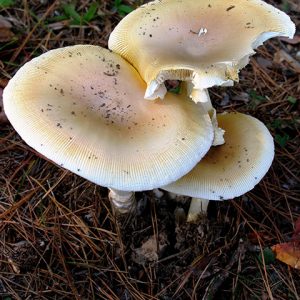

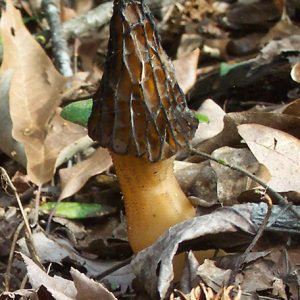
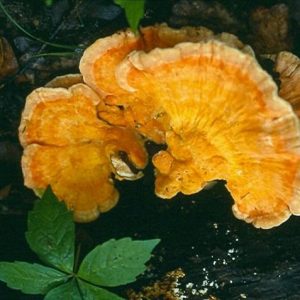
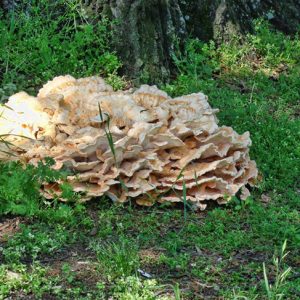

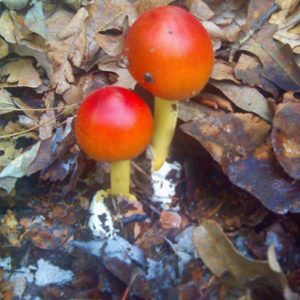
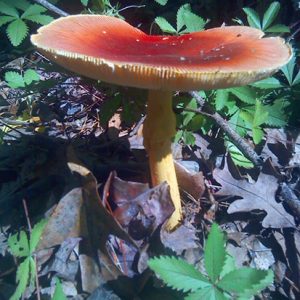
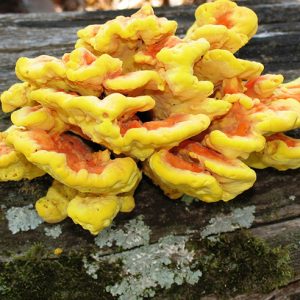




Comments
No comments on this entry yet.